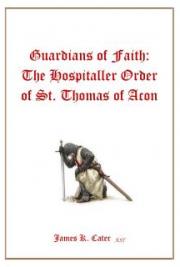Marine Corps University
The President, Marine Corps University, is the Marine Corps' Professional Military Education (PME) proponent. Through its resident and non-resident programs, the Marine Corps University develops the professional competence of its Marines, other service, international, and civilian students. Graduates are prepared to perform with increased effectiveness in service, joint, interagency, intergovernmental and multinational environments at the tactical, operational, and strategic levels of war, across the range of military operations.
Providing relevant, current Professional Military Education has never been more important. The complex environment in which Marines operate requires strong leadership and a high level of competence in a wide array of subject matter. Marine Corps University is committed to providing a World-Class educational opportunity to fully prepare our leaders Marine Corps University consists of nine Professional Military Education (PME) programs and 13 directorates.
PME Programs: Marine Corps War College (MCWAR), School of Advanced Warfighting (SAW), Command and Staff College (CSC), Expeditionary Warfare School (EWS), College of Distance Education and Training (CDET), Foreign Professional Military Education (FPME), Strategy and Policy Course (SPC), Commandant’s Professional Reading List (CPRL), and Enlisted Professional Military Education (EPME)
Directorates: Center for Advanced Operational Culture Learning (CAOCL), Commandant of the Marine Corps (CMC) Fellowship Program, The Brute Krulak Center for Applied Creativity (BKCAC), Center for Strategic Studies (CSS), Leadership Communications Skills Center (LCSC), History Division (HD), LeJeune Leadership Institution (LLI), Library of the Marine Corps (LoMC), Marine Corps University Press (MCUP), Middle East Studies (MES), and National Museum of the Marine Corps (NMMC).
Marine Corps University was founded on 1 August 1989 by order of the Commandant of the Marine Corps, General Alfred M. Gray. Its schools claim a much longer history, beginning in 1891 with 29 company grade officers attending the School of Application. Today’s MCU is the vision and legacy of Generals Lejeune, Butler, Breckinridge, and Gray. Efforts of the Marine Corps to give its personnel formal military schooling date back to 1891, when the School of Application was established as the first resident school for Marine officers.
This school, becoming the Officers Training School in 1909, eventually relocated to Quantico immediately following America’s entry into World War I where it became the nucleus of Marine officer instruction. Throughout the remainder of World War I, experienced veterans returning from France were employed to train those preparing to deploy. World War I had demonstrated to Major General Lejeune the need for the education of Marines of all ranks. Gleaning valuable lessons from the experience of World War I, General Lejeune insisted adequate time be allotted for the study of weapons and their proper tactical employment. As a result, in the fall of 1919, the Marine Corps Officers Training School was opened at Quantico. Brigadier General Butler, realizing the importance of military education for the core of professional officers, continued General Lejeune’s concepts by developing plans for two additional courses of instruction.
The first, called the Field Officers Course, welcomed its first students in October 1920. The second, the Company Grade Officers Course, convened its first class in July 1921. These two courses, along with the basic Marine Corps Officer Training School, formed the foundation for what General Lejeune termed “Marine Corps Schools.” It was this beginning that formed the basis of the Marine Corps University as it exists today. During the interwar years, key visionaries like Major Earl Hancock Ellis and Colonel Robert H. Dunlap, whose names grace Marine Corps University buildings today, foresaw the need for studies in amphibious warfare. In the late 1920s, comprehensive instruction in amphibious operations increased dramatically as the Corps foresaw the need to train its officers in this new mission. To expand the audience of the expanding Marine Corps Schools, correspondence courses were established to parallel the resident courses. Beginning in 1930, special groups were formed from selected Field Officers School graduates and students to work on amphibious doctrine and requirements. Brigadier General James C. Breckinridge, who rewrote the entire curriculum to a strictly Marine Corps orientation, championed the new science of amphibious warfare and close air support.
Breckinridge required his officers to become skilled instructors, specialists in the new “Marine Corps Science.” So important was this new concept, the Field Officers School was temporarily discontinued so its staff and students could devote their full time to developing the new doctrine. To reflect the importance of the Marine Corps’ new mission, two schools were re-designated Amphibious Warfare Senior and Junior Courses for Field Grade and Company Grade officers, respectively. The study and innovative actions at Quantico in the 1920s and 1930s led to the dramatic amphibious successes of World War II. Due to manpower shortages during World War II, both Courses suspended classes. The students and staff assumed those duties necessary to support a quickly expanding Marine Corps. In 1943, an operationally oriented three month “Command and Staff Course” opened at Quantico based on the need for school-trained, field grade officers with commensurate skills to serve in the Pacific Theater. In 1946, the Marine Corps reestablished the three-tiered, professional military education system. Lessons learned from World War II and new concepts based on atomic warfare theory were quickly added to the curricula of the Amphibious Warfare Senior and Junior Courses. In the 1950s, shortly after the Corps introduced vertical envelopment, the curricula at both schools were again modified to include the use of helicopters in amphibious warfare. In 1964, the Senior Course was re-designated Command and Staff College and the Junior Course became Amphibious Warfare School. Amphibious operations remained the theme in both courses throughout the 1970s.
On 16 February 1971, the first course of the Staff Noncommissioned Officer Academy at Quantico, Virginia, convened. In 1981, the Noncommissioned Officer Basic Course was established at 18 sites, and the Senior Course for Staff Sergeants was implemented at Quantico, Virginia. The following year, the Advanced Course for First Sergeants and Master Sergeants was implemented at Quantico, Virginia. Dynamic refinement of the Corps’ professional military education system brought significant curriculum changes in the late 1980s. Maneuver warfare theory was introduced and a focus on Marine Air Ground Task Force (MAGTF) operations was implemented. In 1989, under the direction of then Commandant of the Marine Corps, General Alfred M. Gray, five independent Marine Corps schools were organized into the Marine Corps University. In 1990, the Art of War Studies program was created and, one year later, matured into the Marine Corps War College as the Corps’ senior-level officer professional military education school. Also in 1990, the enlisted Advanced Course became a course for Gunnery Sergeants. Throughout the 1990s, MCU adjusted itself to fit the needs of the Marine Corps.
In 1993 the Commanders’ Program was established for all Lieutenant Colonels and Colonels slated for command; in 1994, annual E-8 Seminars and E-9 Symposiums were established; in 1995, the Logistics Instruction Branch was created to teach all ranks the art of logistics; in 1996, the First Sergeants course was established; and in 1997, the College of Continuing Education was created and directed to integrate all officer distance education programs within a single college. Recent events demonstrate how MCU has continued its impressive list of developments and accomplishments: In 1999, MCU was accredited by the Commission on Colleges of the Southern Association of Colleges and Schools to award a Master’s of Military Science degree for Command and Staff College; in 2001 MCU was accredited to award a Masters of Strategic Studies to graduating students of the Marine Corps War College; in 2003 MCU was accredited to award a Masters of Operational Studies to graduates of the School of Advanced Warfighting.
In 2002, the Amphibious Warfare School and the Command and Control Systems Course merged to become the Expeditionary Warfare School; In 2003, the Logistics Instruction Branch was renamed the School of MAGTF Logistics (SOML) and the Senior Leader Development Program (SDLP) was created to manage General Officer education. The SDLP has since grown into the Lejeune Leadership Institute, responsible for the development of leadership programs across the Marine Corps. In 2000, the Training and Education Command was created at Quantico as the Marine Corps University’s higher headquarters. Officer Candidates School, The Basic School, Command and Control Systems School, the College of Continuing Education, renamed the College of Distance Education and Training, and SOML now report to the Commanding General of Training Command. In 2010, the MAGTF Instructional Group was established under the cognizance of the Vice-President of Academic Affairs. From a humble beginning arose a tradition of study and innovation that continues to this day. The University’s focus, as Education Command, is clearly on the education of leaders in our Corps of Marines. In 2005 MCU’s ability to award regionally accredited graduate degrees was reaffirmed by the Commission on Colleges of the Southern Association of Colleges and Schools, and in 2011 its Fifth Year Interim Report to SACS was accepted without request for additional reporting, thereby attesting to the University’s continued academic excellence in the realm of Professional Military Education.
(Link: https://www.usmcu.edu/about-us)







